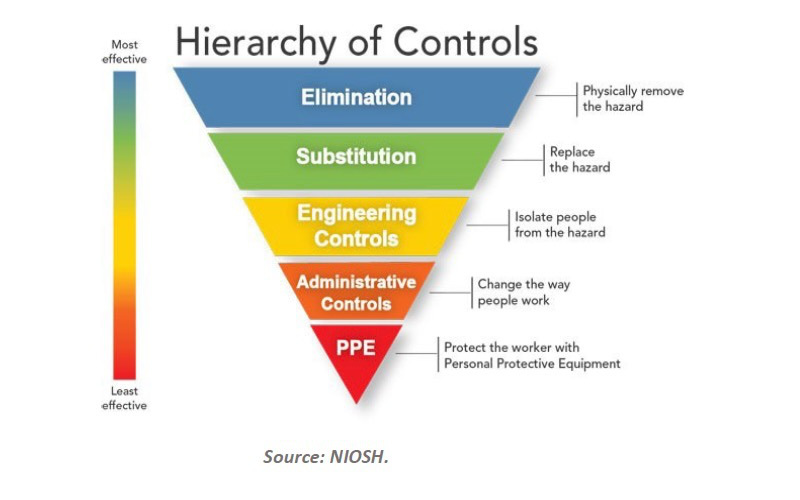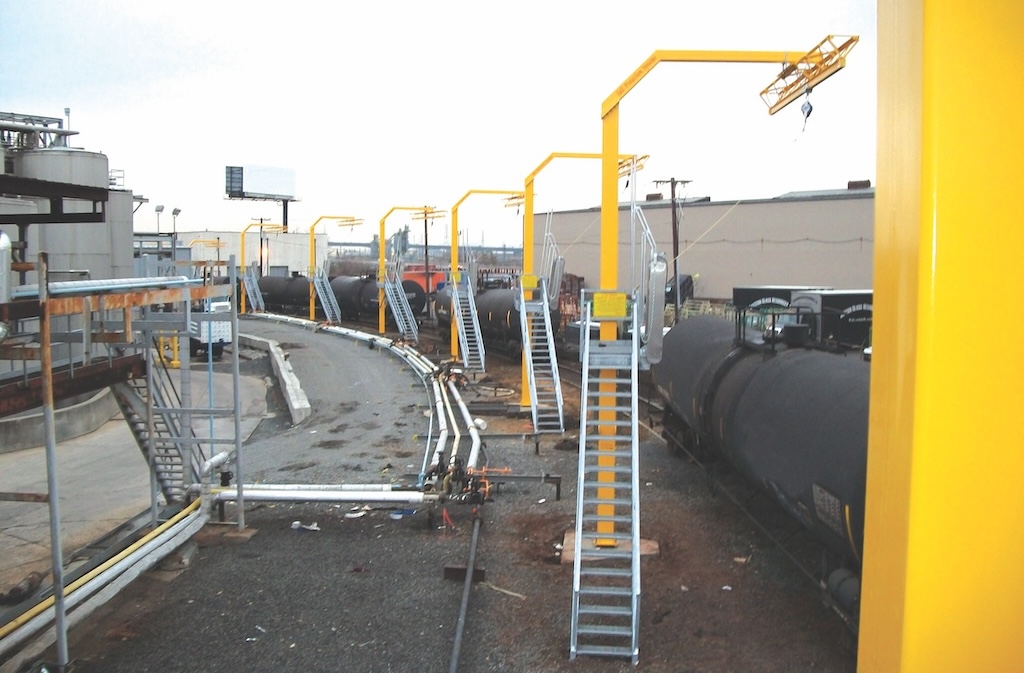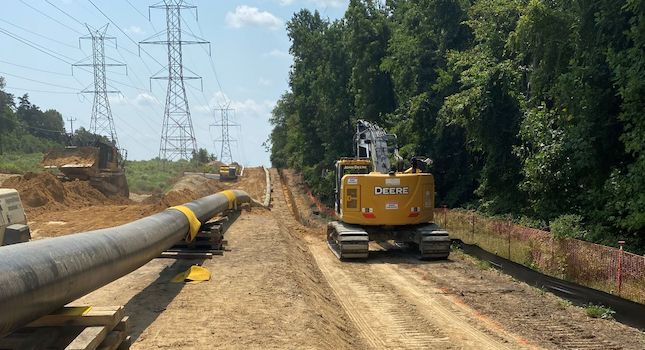OSHA issued its final rule for powered industrial truck operator training [29 CFR 1910. 178(1)] on December 1, 1998. The new requirements are intended to reduce the number of injuries and fatalities that occur as a result of inadequate operator training.
OSHA issued its final rule for powered industrial truck operator training [29 CFR 1910. 178(1)] on December 1, 1998. The new requirements are intended to reduce the number of injuries and fatalities that occur as a result of inadequate operator training. The rule applies to all industries where these trucks are used. Only agricultural operations are excluded.
The rule requires a written training program that takes into account the amount and type of training required for each operator based on four parameters:
– Prior knowledge and skill
– Types of trucks operated
– Hazards present
– Demonstrated ability to operate a powered industrial truck safely.
OSHA estimates this rule will prevent 11 fatalities and 9500 injuries a year, as well as save millions of dollars in medical costs, workers’ compensation, and work stoppages. Savings as a result of compliance are estimated at $16.9 million.
The final rule took effect last March 1. For current employees who operate industrial trucks, training must be in place by December 1, 1999. After December 1, employees must be trained before being assigned to operate a vehicle.
Establishing the program
The new standard is performance based. It makes employers responsible for ensuring that operators have demonstrated competence in the safe operation of the vehicles they must operate. Significantly, OSHA has left it to employers to determine when an operator is competent. But the agency does state that competence must be demonstrated by successfully completing a specific training and evaluation program. The definition of competence may differ from trainer to trainer or from company to company.
Use the following steps as a way of establishing a compliance training program that will meet the intent of the new law.
Identify types of vehicles. The rule defines a powered truck as a mobile, power-driven vehicle used to carry, push, pull, lift, stack, or tier material. Some common types include high lift, counterbalanced, cantilever, rider, fork lift, pallet, narrow aisle rider, order picker rider, and motorized hand/rider truck. Vehicles used to move earth or provide over-the-road haulage are excluded because they are covered by other OSHA standards. Industrial trucks are generally classified by manufacturers according to their individual characteristics.
Identify vehicle operators. A common issue for management when implementing a comprehensive training program is the cost and time required to train all workers who currently operate powered industrial vehicles. Industrial plants with an “anyone can hop on the truck” attitude will find complying with this new regulation particularly challenging. The most effective strategy is to limit the number of workers allowed to operate any given type of vehicle. This technique reduces training costs and lets workers know that operation of these types of vehicles is a highly valued skill. Limiting the number of operators also results in a more efficient training program.
Identify and assess associated hazards. Each type of truck has its own characteristics and inherent hazards. An effective training program must address the unique characteristics of the types of vehicles an employee is being trained to operate.
To meet the new requirements, the training program must be tailored to the types of trucks being used and the hazards associated with that particular truck and workplace. Some employers may find they need to conduct multiple training programs to make sure operators are competent using different types of trucks. Although the basic content of the programs is the same, the required skills that must be demonstrated may differ. Drivers must be able to respond to hazardous conditions. Effective training prepares an operator to act properly to reduce such hazards as obstructed views or excessive speed.
Other vehicle conditions or circumstances that may affect the safe operation of an industrial truck include:
– Tendency to become unstable
– Carrying loads high off the ground
– Its mode of steering
– Moving a load in a way that may cause a shift in the center of gravity that can affect the vehicle’s stability
– Decrease in longitudinal stability caused by raising or moving a load away from the vehicle.
An employer must consider speed, visibility in the direction of travel, stability, steering, and similar factors when evaluating the operation and type of vehicle and when conducting the hazard assessment
Identify and understand workplace hazards. In this step, an employer must identify any additional environmental factors that may affect the operation of each vehicle. These may include uneven floors, fork truck blades being sharpened, cluttered or tight areas, insufficient lighting, obstructed views, employees required to work in the path of truck travel, narrow aisles, and employees exiting into an aisle from a hidden doorway or at intersections in a facility. Where it is practical, these hazards must be eliminated. Hazards that cannot be eliminated must be minimized and covered in the operator training. Employers having workplaces with special hazards such as the possibility of flammable vapor concentrations, wet floors, dock areas, etc., must be sure to include training in these areas in their compliance programs.
Identify work practices that may lead to incidents. Speeding, poor loading, carrying unauthorized passengers, and poor truck maintenance contribute to incidents. An employer who is not sure of current plant practices should consider asking someone outside the facility to perform an assessment.
Implementing the training standard
Each employer must ensure that all powered truck operators are competent to operate the equipment to which they are assigned. Competence must be demonstrated by successfully completing a specific training and evaluation program. Before allowing an employee to operate equipment (except for training purposes), the employer must make sure each operator has successfully completed the required training as specified in the rule.
Training program initiation. Under this section of the rule, trainees may operate an industrial truck only under the following conditions:
– Under the direct supervision of a person who has the knowledge, skills, training, and experience to train operators and evaluate their competence
– When such operation does not endanger the trainee or other employees.
Required training must consist of a combination of formal instruction such as:
– Lecture
– Discussion
– Interactive computer learning
– Videotape
– Written material
– Practical training
– Demonstrations by the trainer with practical exercises by the trainee
– Performance evaluation of the operator in the workplace.
Training content outline. Some training topics may be excluded if the employer can demonstrate that they are not applicable to the safe operation of the industrial truck in the workplace. However, the burden is on the employer to make sure that appropriate training is being conducted. Following are some of the truck and work-related topics that are outlined in the OSHA rule and must be included in the required training.
Truck-related topics . Among the most important aspects of the training program are operating instructions, warnings, and precautions for the specific types of truck an operator will be authorized to operate. Some examples include:
– Differences between an industrial truck and an automobile
– Location of truck controls and instrumentation, what they do, and how they work
– Engine or motor operation
– Steering and maneuvering
– Visibility (including loading and handling restrictions)
– Fork and attachment operation and limitations
– Vehicle capacity, rating, and stability
– Required vehicle inspections and maintenance
– Refueling and/or charging and recharging of batteries
– Operating limits.
Workplace-related topics. Here are some important workplace conditions to consider for safe operation of a powered industrial truck:
– Surface conditions where the vehicle will be operated
– Composition of loads to be carried;load stability
– Load manipulation, stacking, and unstacking
– Pedestrian traffic in areas where the vehicle will be operated
– Narrow aisles and other restricted places where the vehicle will be operated
– Hazardous (classified) locations where the vehicle will be operated
– Ramps and other sloped surfaces that could affect vehicle stability
– Closed environments and other areas where insufficient ventilation or poor vehicle maintenance could cause a buildup of carbon monoxide or exhaust vapors
– Other potentially hazardous environmental conditions that could affect safe operation.
Refresher training, evaluation, certification
Several circumstances require refresher training, including an evaluation of the effectiveness of that training, be conducted to make sure the operator has the knowledge, skills, and experience to operate a vehicle safely. This requirement applies if an operator has:
– Been observed operating a vehicle in an unsafe manner
– Been involved in an accident or near miss
– Been assigned to drive a different type of truck
– Received an evaluation that reveals the operator is not operating the truck safely.
Another important training factor that is often overlooked is changing workplace conditions. Refresher training should be provided any time a change in the workplace might affect the safe operation of the vehicle. In addition, operator performance must be re-evaluated at least once every 3 yr.
An employer must certify that each equipment operator has been properly trained and evaluated. Certification must include:
– Name of the operator
– Date of training
– Date of the evaluation
– Name, position of person(s) training or evaluating the operator.
Revised operator training requirements must be completed by December 1, 1999, for all operators hired prior to that date. After December 1, 1999, any newly hired operators must complete the required training before they are assigned to any work requiring them to drive an industrial vehicle.
Almost a million industrial trucks are in use in the industries affected by this regulation. Hazards commonly associated with industrial trucks vary with vehicle type, make, and model. Specific training must address these hazards and must include formal instruction, practical training, and evaluation of operator performance. An employer must demonstrate that employees are competent to operate a powered industrial truck by having them successfully complete a training program and evaluation.
As with any new rule, an employer must review the standard to understand fully the implications of its intent. This overview offers some general information on the new performance-based rule, but how the regulation will be applied by industry and interpreted by OSHA remains an interesting topic of discussion.
For additional information, consult these resources: OSHA Final Rule, “Powered Industrial Truck Operator Training,” 29 CFR 1910.178 (1), December 1, 1998, Federal Register # 63:66237-66274; Trade News Releases: OSHA 98-4, Tuesday, December 1, 1998, “$135 Million in Employer Costs To Be Saved;” and Ross & Hardies OSHA Alert, “OSHA Issues Revised Powered Industrial Truck Operator Training Standard,” December 1998, p 1-3.
Crystal A. Awadalla is a registered safety and human resources professional and is presently Human Resources Manager, Safety and Compliance, for Southcorp Packaging USA, Inc., in Atlanta. For the past 15 yr, she has designed safety management systems and helped line organizations in the chemical, government, and manufacturing sectors implement safety management systems. Contact her by phone at 770-951-4786 or e-mail: [email protected].
James E. Roughton holds an M.S. in Safety Science from Indiana University of Pennsylvania. He is a frequent speaker at conferences and professional meetings and the author of various articles on safety and environmental issues. He is also a member of the American Society of Safety Engineers’ Georgia chapter and serves as webmaster of the chapter’s homepage (www. asse-ga.org). Contact him by phone at 770-521-3875 or e-mail: [email protected].



